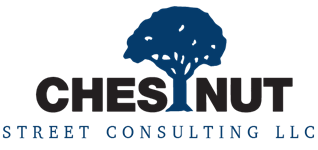As a business owner or entrepreneur of a small business . . .
Are you struggling with ways to ease your cash flow?
Do you wish you could take on new contracts—but can’t because margins are squeezed to the limits?
If you own a small trucking, manufacturing, textile, or professional services firm, you know what it’s like working with margins so tight it’s almost impossible to take on new opportunities.
But it doesn’t have to be that way.
This article shows you four different capital resources that will improve your cash flow—even with those impossibly tight margins.

1. Accounts receivable factoring
What is it?
Accounts receivable factoring is a form of financing where your business can sell an invoice to a factoring company, which pays you 80% of the invoice amount.
What’s the benefit?
You get money now instead of later.
Who is it for?
Companies that do not qualify for a bank line of credit but have strong receivables.
Who is it not for?
Companies that qualify for favorable bank rates and credit.
How do I apply?
It is an application process, and I will introduce you to the capital source/point of contact.
2. Purchase order financing
What is it?
A way to fund the purchase of commodities/goods from your supplier when you do not have favorable terms (or no terms).
What’s the benefit?
It extends the number of days to pay your accounts payable.
Who is it for?
Companies that have no terms (or have unfavorable terms) with their supplier.
Who is it not for?
Companies that have favorable terms with their suppliers.
How do I apply?
It is an application process, and I will introduce you to the capital source/point of contact.
3. Asset-based lending
What is it?
Asset-based lending provides your business loans based on the assets held by the company.
Possible assets include machinery and equipment, invoices, inventory, buildings, and real estate.
Your assets are assigned a valuation to determine the size of the loan.
Occasionally, a third-party appraiser may be needed.
What’s the benefit?
It’s cost-effective.
You’re using your assets to get access to a loan. You’re not going to a bank and going into debt. You’re leveraging what you have, so the loan is flexible and discreet.
Who is it for?
It’s ideal for companies whose cash flow is tight.
As an example, you may have a new deal to sell some existing inventory, but it may take you 45 days to complete the deal.
You may also have another deal in the works, but you don’t have the cash to complete the deal.
When cash is tight, you can leverage your assets to get the loan you need to close the second deal.
The same concept applies to payroll, as well.
Who is it not for?
Companies that are already receiving favorable bank rates and terms, don’t have cash flow issues, or have good liquidity.
How do I apply?
It is an application process, and I will introduce you to the capital source/point of contact.
4. Revenue-based funding
What is it?
Your company can exchange a share of its future revenues for capital up front.
This means you will be able to get a loan based on how much revenue your company generates.
Because your revenues go up and down, this determines the repayment terms.
As you pay off your loan, the repayment amount fluctuates.
What’s the benefit?
It’s a short-term loan (usually less than seven years) that is repaid based on monthly revenues.
The nice thing about this loan is that you’re using the money you generate each month to pay back the loan.
Who is it for?
Growing small and medium-sized companies with recurring revenue and strong margins.
Who is it not for?
Large companies and companies that have strong credit relationships with their banking institutions.
How do I apply?
It is an application process, and I will introduce you to the capital source/point of contact.

I know what you’re thinking . . . you don’t want to give up the little margins you have to apply for a loan
I get what you’re saying.
It’s too expensive, it takes too much time to apply, and you’re willing to wait 90 days to get paid—even if you miss paying your debts.
This is a slippery slope.
It means that you’re willing to risk taking a hit to your credit AND your reputation.
On the other hand, by taking out one of these loans, you can fulfill orders, make your end client happy, and build up your cash flow.
You can show banks you have income consistency month to month.
Here’s an example of accounts receivable factoring
Let’s say you make a $100,000 sale.
Your customer agrees to pay you net 30 days.
So, now you’re out $100,000.
You can sell that asset, your $100,000 invoice, to alternative lenders.
The lender gives you $80,000.
The lender holds back $20,000 of that invoice.
You continue to take care of business as usual.
When your customer pays the invoice, then the lender will get their $80,000 back.
You will then get the remaining $20,000 back . . . minus the lender’s fees.
Is your minority-owned business getting ignored (or rejected) by potential funders or customers?
Losing out on business opportunities affects your financial goals, relationships, and even mental health.
But it doesn’t have to be that way.
Although it may feel like you don’t have control over the situation, you do.
Most minority business owners have no idea about the special resources available to them, provided both by the government and by private organizations.
The first order of business is to enlighten yourself about the opportunities available to a minority-owned business so you can grow, thrive, and shine.
Ready to take the first step?
Please go to my Calendly and book a 15-minute call.
Our discussion will:
- Review your current situation
- Use targeted questions to see if we are a potential fit
- Discuss your current challenges and why things haven’t worked
- Consider what you are trying to accomplish
- Decide whether a 45-minute discovery call is necessary
All your contact information is secure and confidential.
Once you fill out and submit the form, you will get a confirmation email with a Zoom link for our discovery call.

